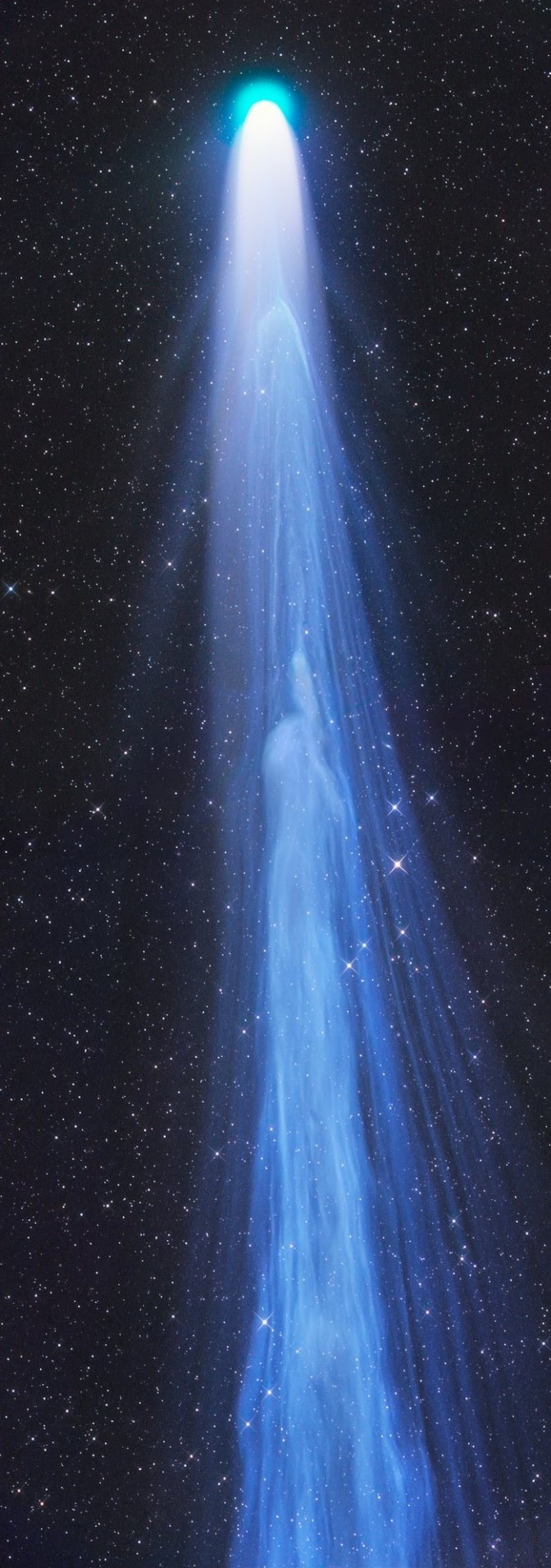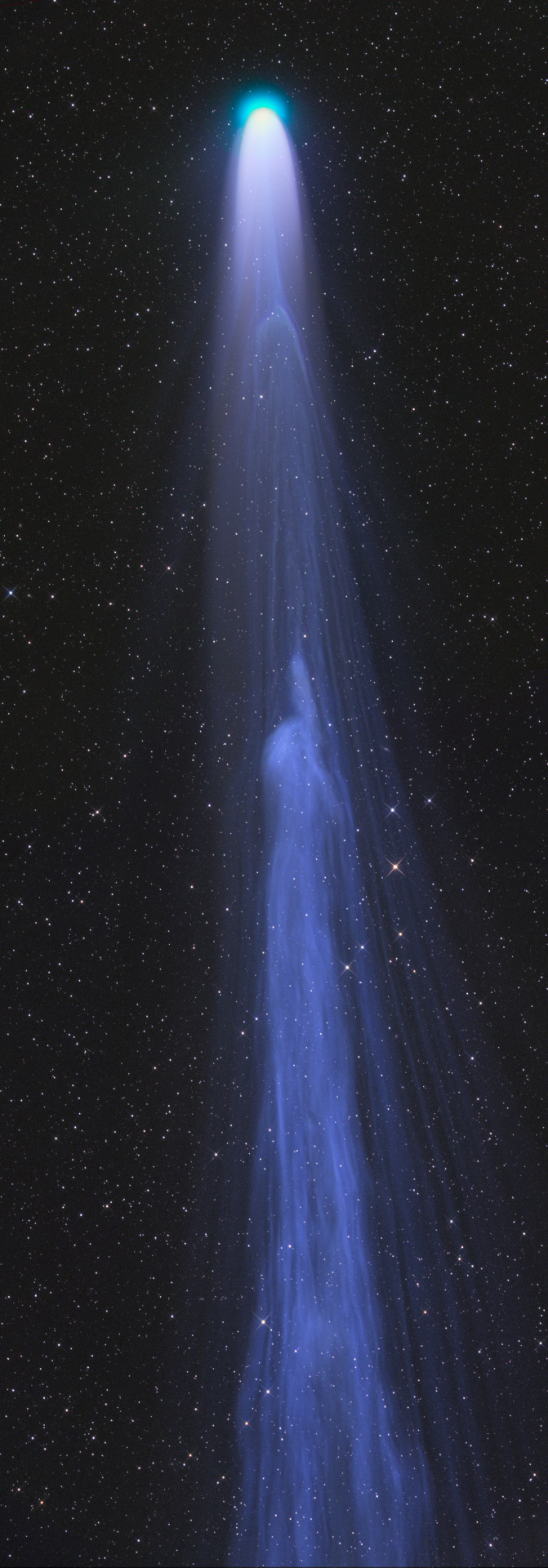#comet
Explore tagged Tumblr posts
Text


Comet Leonard
30K notes
·
View notes
Note
I bet if the hedgehog genes won, Shadow would say something like "Your baby is even less baked than mine was" XD
Since Comet is half hedgehog what did he look like as a newborn?


the hairy kitten genes managed to win so they had a bouncing baby hairball
#sonic the hedgehog#blaze the cat#sonaze#sonic#blaze#comet#cute#awesome#Awesome drawings#babies#relatable
2K notes
·
View notes
Text

Meteor / 10.30.24 colored pencil + black paper
9K notes
·
View notes
Text
a little bunny looking at the stars in case you're having a bad day.
˚ . ✧
✧. ★ ˚
★ ☄︎
˚ ✧ ˚
*. ⋆
༘ * 🔭🐇
#a stargazing little bun bun <3#cottagecore#bunnies#bunny#emoticons#stargazing#cute#space#stars#comet#emojis#light academia aesthetic#symbols
114K notes
·
View notes
Text
75 year difference <3
and second gap is 73. welcome back, Halley comet

Halley's Comet and Me (x)
937 notes
·
View notes
Text

Konstantin Korobov (Russian, 1985) - Star (2024)
6K notes
·
View notes
Text

funny birthday doggy
53 notes
·
View notes
Text

Been drawing lots of reindeer at work these days
#art#illustration#artists on tumblr#digital art#drawing#artwork#reindeer#christmas tree#christmas art#rudolph#festive#dasher#blitzen#prancer#donner#cupid#comet#santa#bro visited his friend#comic#comic strip#comic art#comics#short comic#mini comic#digital comic#web comic#original comic#art tag
43K notes
·
View notes
Text

Earthbound - Greg Mort , 1993.
American, b. 1952 -
Watercolour on paper ,
7K notes
·
View notes
Text

Comet Leonard © Lionel Majzik
#comet#comet leoard#astrophotography#space#stars#galaxy#universe#cosmos#planet#astronomy#solar system#night sky#c/2021 a1
2K notes
·
View notes
Text

Comet Tsuchinshan-ATLAS over Mexico Image Credit: Daniel Korona
4K notes
·
View notes
Text
5 Unpredictable Things Swift Has Studied (and 1 It’s Still Looking For)
Our Neil Gehrels Swift Observatory — Swift for short — is celebrating its 20th anniversary! The satellite studies cosmic objects and events using visible, ultraviolet, X-ray, and gamma-ray light. Swift plays a key role in our efforts to observe our ever-changing universe. Here are a few cosmic surprises Swift has caught over the years — plus one scientists hope to see.

#BOAT
Swift was designed to detect and study gamma-ray bursts, the most powerful explosions in the universe. These bursts occur all over the sky without warning, with about one a day detected on average. They also usually last less than a minute – sometimes less than a few seconds – so you need a telescope like Swift that can quickly spot and precisely locate these new events.
In the fall of 2022, for example, Swift helped study a gamma-ray burst nicknamed the BOAT, or brightest of all time. The image above depicts X-rays Swift detected for 12 days after the initial flash. Dust in our galaxy scattered the X-ray light back to us, creating an extraordinary set of expanding rings.

Star meets black hole
Tidal disruptions happen when an unlucky star strays too close to a black hole. Gravitational forces break the star apart into a stream of gas, as seen above. Some of the gas escapes, but some swings back around the black hole and creates a disk of debris that orbits around it.
These events are rare. They only occur once every 10,000 to 100,000 years in a galaxy the size of our Milky Way. Astronomers can’t predict when or where they’ll pop up, but Swift’s quick reflexes have helped it observe several tidal disruption events in other galaxies over its 20-year career.

Active galaxies
Usually, we think of galaxies – and most other things in the universe – as changing so slowly that we can’t see the changes. But about 10% of the universe’s galaxies are active, which means their black hole-powered centers are very bright and have a lot going on. They can produce high-speed particle jets or flares of light. Sometimes scientists can catch and watch these real-time changes.
For example, for several years starting in 2018, Swift and other telescopes observed changes in a galaxy’s X-ray and ultraviolet light that led them to think the galaxy’s magnetic field had flipped 180 degrees.

Magnetic star remnants
Magnetars are a type of neutron star, a very dense leftover of a massive star that exploded in a supernova. Magnetars have the strongest magnetic fields we know of — up to 10 trillion times more intense than a refrigerator magnet and a thousand times stronger than a typical neutron star’s.
Occasionally, magnetars experience outbursts related to sudden changes in their magnetic fields that can last for months or even years. Swift detected such an outburst from a magnetar in 2020. The satellite’s X-ray observations helped scientists determine that the city-sized object was rotating once every 10.4 seconds.

Comets
Swift has also studied comets in our own solar system. Comets are town-sized snowballs of frozen gases, rock, and dust. When one gets close to our Sun, it heats up and spews dust and gases into a giant glowing halo.
In 2019, Swift watched a comet called 2I/Borisov. Using ultraviolet light, scientists calculated that Borisov lost enough water to fill 92 Olympic-size swimming pools! (Another interesting fact about Borisov: Astronomers think it came from outside our solar system.)

What's next for Swift?
Swift has studied a lot of cool events and objects over its two decades, but there are still a few events scientists are hoping it’ll see.
Swift is an important part of a new era of astrophysics called multimessenger astronomy, which is where scientists use light, particles, and space-time ripples called gravitational waves to study different aspects of cosmic events.

In 2017, Swift and other observatories detected light and gravitational waves from the same event, a gamma-ray burst, for the first time. But what astronomers really want is to detect all three messengers from the same event.
As Swift enters its 20th year, it’ll keep watching the ever-changing sky.
Keep up with Swift through NASA Universe on X, Facebook, and Instagram. And make sure to follow us on Tumblr for your regular dose of space!
2K notes
·
View notes
Text




Comet Thrower pictograph, Hell Roaring Canyon, Utah
Astrophotographer Tom Rae
2K notes
·
View notes
Text

Three Together via NASA APOD

#comet pons brooks#comet#jupiter#planets#moon#crescent moon#space#astrophotography#astronomy#solar system#stars#sky#galaxy#universe#nasa#apod#night
4K notes
·
View notes
